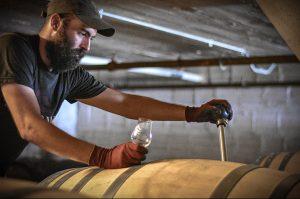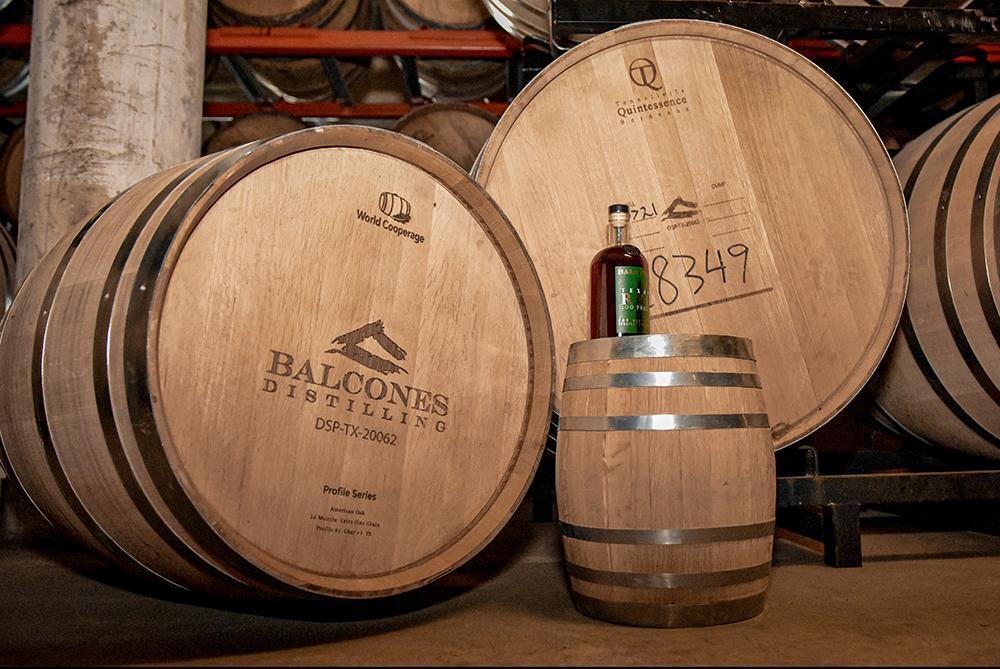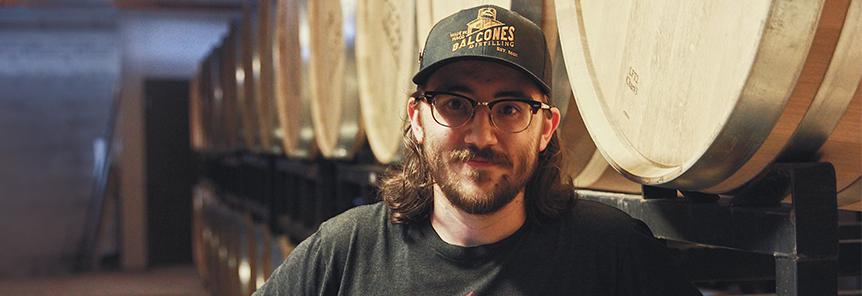An Experiment in Barrel Size
Guest Post by Nathen Gabriel, Balcones Distilling
Nathen Gabriel, Balcones Distilling
In 2009, Balcones Distilling released the first Texas whisky since Prohibition. With no template or rubric for how to make whisky in Texas, experimentation has always been integral to who we are as a distillery. This experimentation has led us to produce a wide variety of award-winning whisky expressions over the last twelve years. From our classic year-round whiskies like Baby Blue and “1” Texas Single Malt, to our annual releases like Mirador and Blue Corn Bourbon, we are certain that any whisky drinker can find one of our expressions to enjoy and cherish.
There are an infinite number of variables that affect the whisky that ends up in one’s glass, many of which we have tweaked and continue to adjust to produce the finest whisky possible. One variable that we have never attempted to control is the notorious Texas climate. While the heat and humidity of Texas are no secret, wide temperature swings throughout the year are just as big of a challenge. We realized early on that these challenges could become great opportunities for us if we set ourselves up to have the weather work for us instead of against us. This goal of working with our climate is mostly what led us to experimenting with barrel size.
In our early years, we primarily used 5-gallon barrels to age our whiskies, but as our operation grew and our understanding of our climate and environment changed, we transitioned to 53-gallon and 225-liter barrels. In this transition we noticed that maturation, in a sense, slowed. The reduced surface contact of the larger barrels slowed the rate at which the spirit took on oak character and gave the spirit more time to oxidize before becoming too oak dense or overly tannic. While the differences between the 5-gallon and 53-gallon barrels were immediately obvious, we were seeing analogous, though more subtle differences between the 53-gallon and 225-liter barrels. The larger the barrel, the slower the whisky took on oak character and tannin. Our hypothesis is that we will see these trends continue as we age our spirit in even larger barrels.

To test this hypothesis, we are undertaking a huge project, 500 liters to be exact. With the assistance of Andrew, Chad, and the rest of the knowledgeable team at ISC, we’ve installed fifty-six “large format” (i.e. 500 liter) barrels in our warehouse. We worked closely with ISC to ensure that the custom toasts and chars applied to the barrels would complement our unique spirit and climate. These barrels were filled earlier this year with rye spirit and wheated bourbon new make and we expect the spirit to mature in the barrels for 8-10 years or more! We will check in on them periodically to track their progress, but we expect to be drinking Texas Bourbon and Rye from these barrels in about a decade.
Hopefully, you will join us. Cheers!
From Andrew at ISC
As Nathen explained, the Texas climate makes longer maturation times a little more difficult to master. The team at Balcones is very particular about their flavor profiles and this is something they wanted to tackle.
Their idea was to create a new line of barrels that allowed them to reach maturation ages they had not previously attempted. The intense Texas heat and temperature swings cause everything from the extraction rates to the solubility of the target compounds to change. The first three to four years in a new barrel is when the initial extraction is EXTREMELY active. Plotted on a graph, you would see a very steep curve for extraction rate over a short amount of time. Our job was to essentially flatten out that curve as much as we could to slow down the extraction rate.
After a lot of brainstorming and several zoom meetings about different barrel configurations, they decided on 500L, large format barrels with custom heat treatments that emphasized certain flavors. The larger barrels do a great job of slowing down the extraction rate resulting in a more elegant and complex final product. We are very glad to have had the opportunity to lend a hand on this project; I just hate we have to wait several years to get a taste of the final product!

The larger barrels do a great job of slowing down the extraction rate resulting in a more elegant and complex final product.


Comments 1
I’m 76 – still time to wait this out. Where do I sign up?